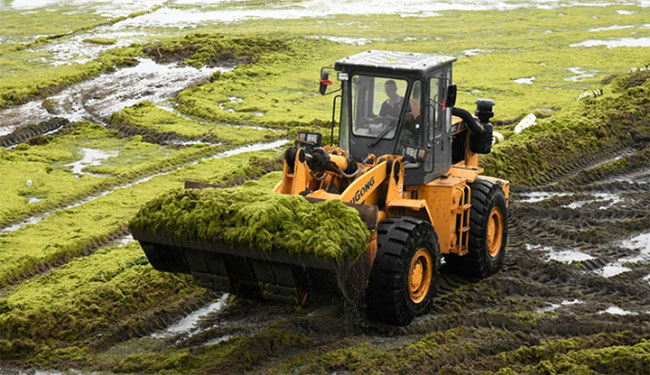New Research on Algae Raises Hopes for Humanity’s Future in Transforming Mars from a Barren Planet to a Green Earth-like World.
In a recent experiment, algae were lifted by a balloon to an altitude of 30,000 meters and survived for four hours at temperatures below -30°C under high-intensity ultraviolet light and with a lack of oxygen, Xinhua reported on December 28.

Algae thriving on a beach in Qingdao, Shandong Province, China. (Photo: Xinhua)
This is the fourth experiment conducted by the Institute of Hydrobiology under the Chinese Academy of Sciences since 2019. The previous three experiments were carried out in extreme environments in Inner Mongolia and Xinjiang Autonomous Region.
The results showed that algae remained healthy in conditions simulating Mars; however, further experiments are needed to test whether they can grow or even reproduce on the surface of the red planet, noted researcher Wang Gaohong from the Institute of Hydrobiology.
Algae have gradually changed and improved Earth’s environment since this group of plants emerged in ancient times. Liu Yongding, director of the Chinese Academy of Sciences, believes they are crucial to the origin and evolution of species on our planet.
Algae are the primary source of oxygen on Earth and play an important role in maintaining the stability of the biosphere. They consume carbon dioxide (CO2) and produce oxygen, supporting the development of life. This will be particularly beneficial as Mars’ atmosphere is primarily composed of CO2.
Liu emphasized that conditions on Mars are very similar to those on our planet in its early days. Therefore, algae could be the key to humanity’s ambition to conquer and settle on the red planet.
According to Professor Xiao Long at the China University of Geosciences, the experiment testing the impact of high-intensity radiation from space on algae is of great significance before sending this organism to Mars, where there is no “global magnetic field” to shield against cosmic and solar radiation.


















































